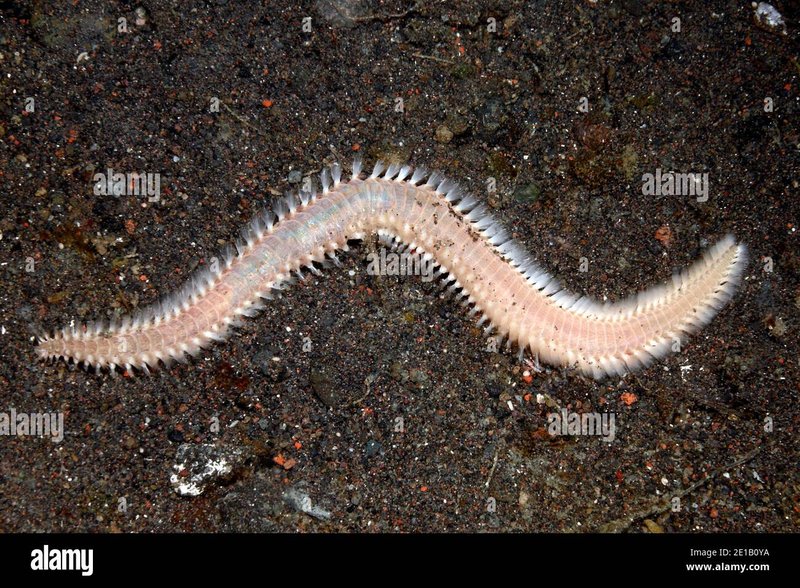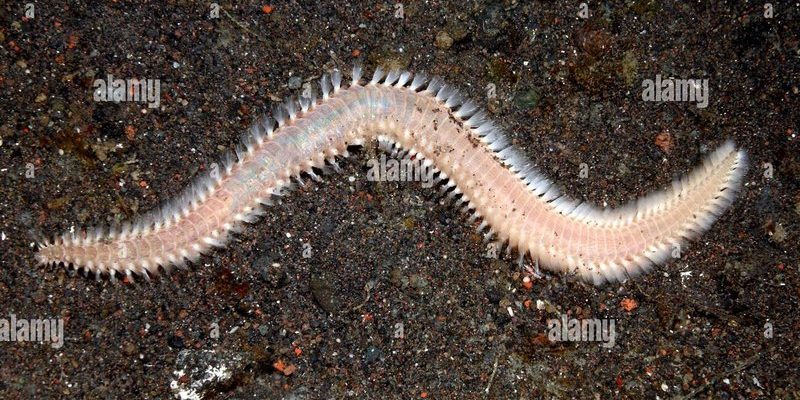
Bristle worms, also known as polychaetes, are marine worms that come in various shapes and sizes. Some of them can be quite beautiful, displaying vibrant colors that could rival a tropical sunset. However, their beauty comes with a catch. You see, bristle worms have tiny hair-like structures, called setae, that can be both a blessing and a curse. While they help the worms move and interact with their environment, they can also give you quite a sting if you’re not careful. So, what’s the deal with these stings? Are they venomous? Let’s unravel this mystery.
What Are Bristle Worms?
Bristle worms belong to the class Polychaeta, a group of segmented worms found primarily in marine environments. They vary in appearance, ranging from a few centimeters to over a meter long. Most bristle worms inhabit the ocean floor and are scavengers, feeding on detritus and other organic matter. Think of them as the cleanup crew of the underwater world, helping to recycle nutrients.
These worms are unique in their structure. Their bodies are divided into segments, each equipped with a pair of parapodia. These parapodia are like tiny legs that help them move through the sand or swim through the water. But it’s those setae I mentioned earlier that are the real stars of the show. These hair-like structures are primarily made of chitin and can be quite sharp, which brings us to the next point.
Do Bristle Worms Sting?
In short, yes, bristle worms can sting. When you accidentally touch one, the setae can break off and penetrate your skin, causing a painful sensation. It’s a bit like getting a splinter but underwater. Most people describe the sting as mild to moderately painful, depending on the type of bristle worm involved.
What’s important to understand is that this sting is not necessarily venomous. The primary purpose of the setae is for defense, helping the worm to deter predators rather than to inject venom. Essentially, they’re like a fine defense mechanism. The sting can lead to localized irritation, redness, or a rash, similar to a mild allergic reaction.
Is the Sting Dangerous?
For most people, the sting from a bristle worm is not dangerous. It might feel uncomfortable, but generally, it doesn’t lead to severe health issues. Here’s a quick rundown on what you might experience:
- Pain: The initial sting can be sharp and stinging.
- Redness: The area around the sting may become red and inflamed.
- Itching: After the sting, some may experience itching or a rash, similar to a bug bite.
However, if you’re allergic to marine life or if the sting occurs in sensitive areas, it might be wise to consult a healthcare professional. Just like how some people can have adverse reactions to jellyfish stings, individual reactions can vary. So, keeping an eye on any unusual symptoms is essential.
What to Do if Stung by a Bristle Worm
So, what should you do if you find yourself on the receiving end of a bristle worm sting? Don’t panic; there are a few straightforward steps to follow:
1. Rinse the Affected Area: Start by rinsing the sting site with seawater to clean it off. Avoid using fresh water, as it can irritate the area more.
2. Remove Any Setae: If you see any bristle fragments stuck in your skin, use tweezers to carefully pull them out. Avoid using your fingers, as this might push them deeper.
3. Apply a Cold Compress: To relieve pain and reduce swelling, apply a cold pack or a cloth with ice wrapped inside. This can help soothe the irritation.
4. Take Over-the-Counter Pain Relief: If needed, consider taking over-the-counter pain relief, like ibuprofen or acetaminophen, to ease discomfort.
If symptoms worsen or don’t improve in a couple of days, it’s best to seek medical advice. Remember, knowledge is power when it comes to dealing with nature’s surprises!
How Do Bristle Worms Fit into the Ecosystem?
Bristle worms play a vital role in marine ecosystems. They’re not just there to sting unsuspecting beachgoers; they help with nutrient cycling and contribute to the overall health of the ocean’s habitat. By feeding on organic matter, they help break it down into simpler compounds that other marine organisms can use.
Additionally, bristle worms serve as food for many marine animals, including fish, crabs, and even some sea turtles. This makes them a critical part of the food web, connecting various species within the ocean.
So, while they may not be the most cuddly creatures in the sea, they certainly have their place in keeping the marine ecosystem thriving.
Are There Other Types of Worms with Stinging Abilities?
You might wonder if other types of worms can sting. Indeed, some can! For example, the fireworm is another marine worm that packs a punch with its venomous bristles. These bristles can cause painful stings, somewhat similar to bristle worms, but they come with an added kick of toxins.
Here’s a quick comparison:
| Type of Worm | Ability to Sting | Effect of the Sting |
|---|---|---|
| Bristle Worm | Yes | Painful but generally not venomous |
| Fireworm | Yes | Painful and can be venomous |
Understanding these differences can help you navigate your time in the water safely. While many marine animals pose no threat, knowing which ones can sting is essential for a pleasant swim.
Final Thoughts on Bristle Worms and Stings
Bristle worms are fascinating little creatures with a unique role in our oceans. While they can sting, the effects are typically manageable and not life-threatening. Being informed about these marine inhabitants can help you respect the ocean’s ecosystem while enjoying your time by the water.
So next time you’re at the beach, remember that while some creatures may sting, they also contribute to the beauty and balance of marine life. And if you happen to encounter a bristle worm, you’ll know exactly how to handle it with ease!

